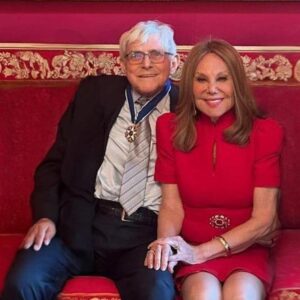“I am not going to accept from anybody their limitations on my life. Not gonna do it. My life is incredible.”

Paul went inside his family’s home in a Dallas, Texas, suburb when he was just six years old and told his mother that he wasn’t feeling well.
Paul had always been a healthy, happy, and energetic kid since his birth in 1946, but suddenly it was obvious that something was happening.
“Oh my God, not my son,” Paul recalled his mother saying.
In accordance with the doctor’s recommendations, he spent the following few days recuperating in bed, but the boy clearly had polio and was not improving. Less than a week after he first felt severely ill, he lost his ability to swallow, breathe, or grasp anything in his hands.
When his parents eventually arrived at the hospital, he joined numerous other kids who were suffering from same symptoms.
Before polio immunizations were available, the virus incapacitated more than 15,000 individuals. Even when an infected individual shows no symptoms of polio, it can still spread.
Fatigue, fever, stiffness, muscular discomfort, and vomiting are some of the signs and symptoms of polio. Polio can, in rarer instances, also result in paralysis and death.

After being evaluated by a doctor who declared him dead, Paul was given a second shot at life by a different doctor.
After the emergency tracheotomy was completed by the second doctor, Paul was then put inside an iron lung.
Three days later, when he finally awake, he found himself among several rows of kids who had also been fitted into iron lungs.
”I didn’t know what had happened. I had all kinds of imaginings, like I’d died. I kept asking myself: Is this what death is? Is this a coffin? Or have I gone to some undesirable place?” the Texas native told As It Happens host Carol Off in 2017

The fact that Paul couldn’t communicate due to having a tracheotomy added to the scary nature of the situation.
“I tried to move, but I couldn’t move. Not even a finger. I tried to touch something to figure it out, but I never could. So it was pretty strange.”
The device was the first machine to ventilate a person, and it was created in the late 1920s.
The equipment is hermetically sealed from the neck down and provides a negative pressure in the chamber that sucks air into the patient’s lungs. In the early days, it was sometimes referred to as the “Drinker respirator.”




